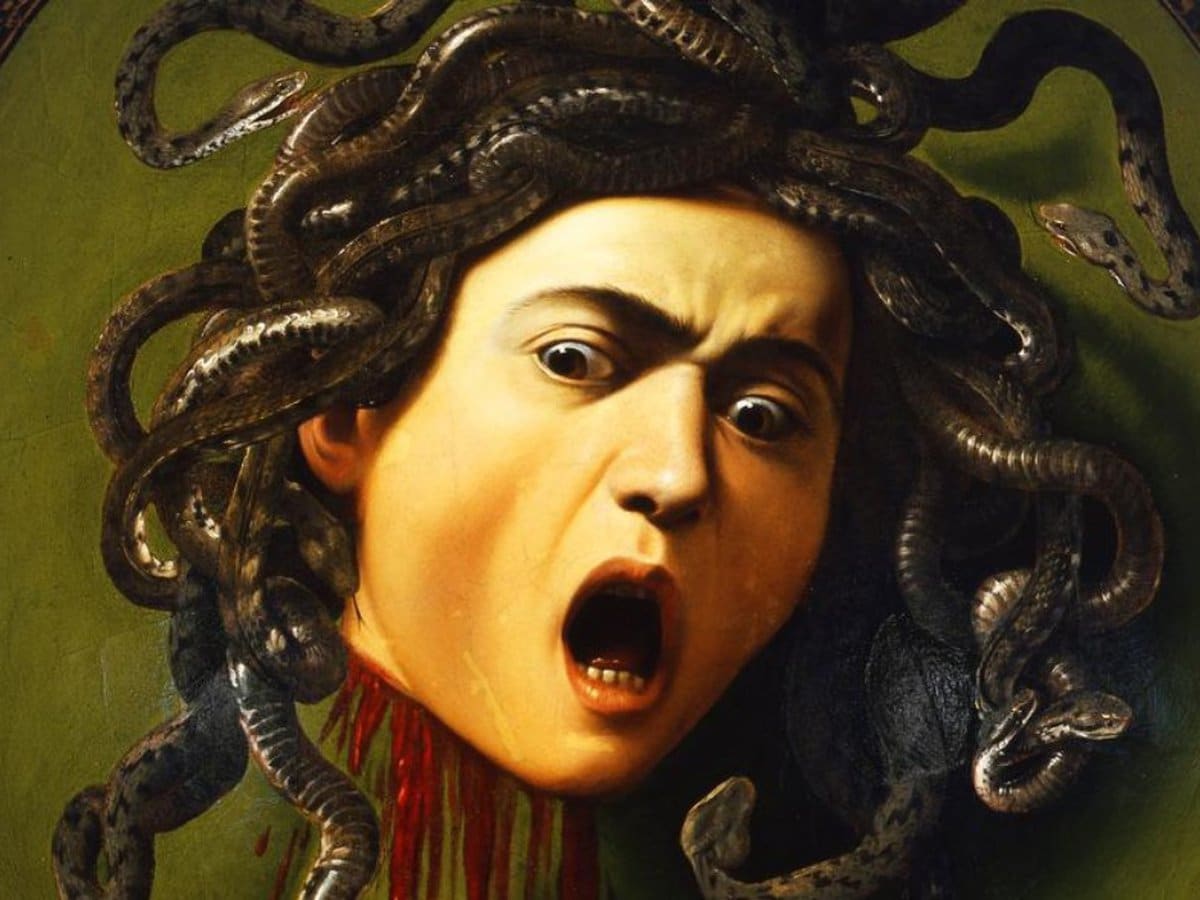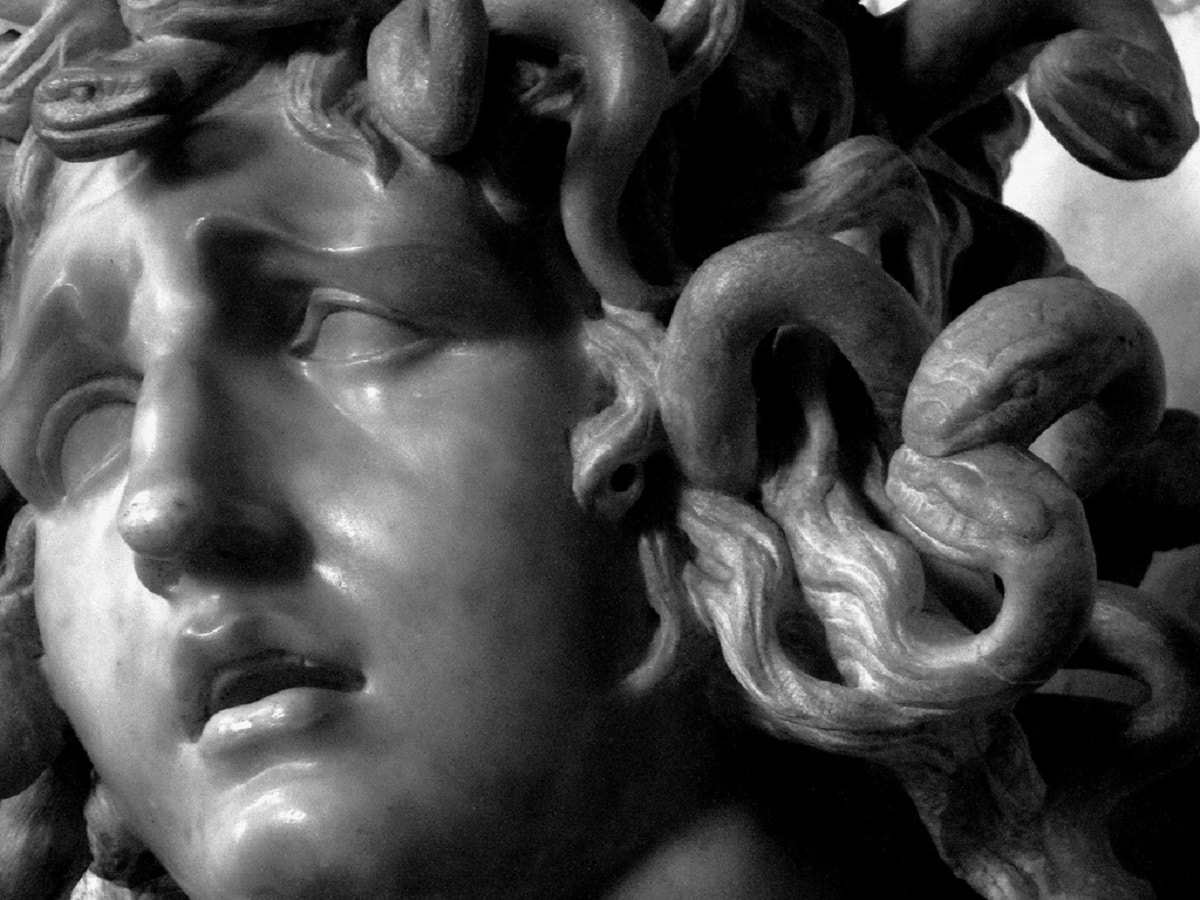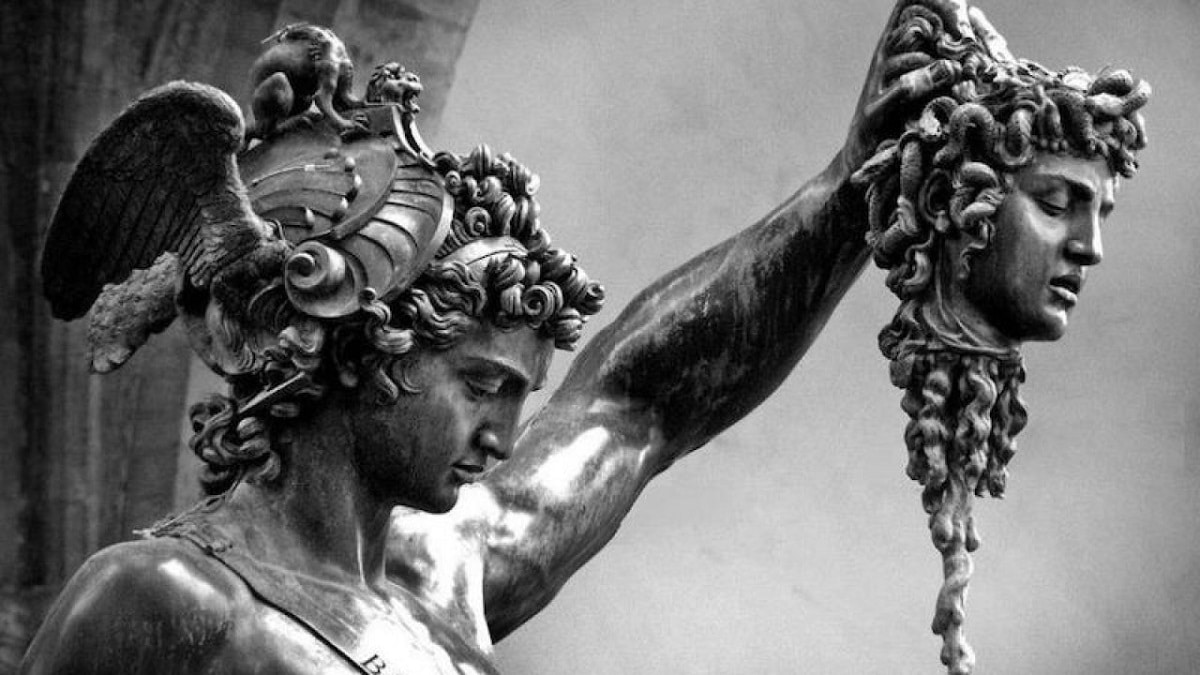
Medusa He is one of the best known and most fascinating figures in Greek mythology. It was one of the three gorgons, along with Stheno and Euryale, the only one of the three terrible sisters who was not immortal.
Who were the gorgons? These monstrous creatures so feared by the Greeks in ancient times were winged women who instead of hair on their heads they had live snakes. However, this was not the scariest of them. The worst thing was that, according to legend, those who dared to look into their eyes were immediately turned to stone.
The gorgons
It is easy to imagine the fear that these creatures must have inspired in the Greeks of the time, who took all those old myths for certain. In any case, it must have been quite reassuring to know that the gorgons lived in a remote place. On a distant island called Sarpedon, according to some traditions; or, according to others, somewhere lost in Lybia (which was what the Greeks called the African continent).
The gorgons are daughters of Forcis and Keto, two of the primordial divinities within the complex Greek theogony.
The three sisters (Stheno, Euryale and Medusa), received the name of gorgons, that is to say, "terrible". It was said of them that his blood had the power to bring the dead back to life, as long as it was extracted from the right side. Instead, the blood on the left side of a gorgon was a deadly poison.

Bust of Medusa sculpted by Gian Lorenzo Bernini in 1640. This grandiose Baroque sculpture is kept in the Capitoline Museums of Rome.
Speaking specifically of Medusa, it must be said that its name derives from the ancient Greek word Μέδουσα whose meaning is "guardian".
There is a late legend that attributes a different origin to Medusa than the other two gorgons. According to this, Medusa was a beautiful maiden who would have offended the goddess Athena desecrating one of the temples consecrated to her (according to the Roman author Ovid, he would have had sex with the god Poseidon in the sanctuary). This, severe and without compassion would have transformed her hair into snakes as punishment.
The myth of Medusa has starred in many artworks from the Renaissance to the XNUMXth century. Perhaps the most famous of all is the oil painting by Caravaggio, painted in 1597, the one shown in the image that heads the post. In more recent times, the figure of Medusa has been claimed by some sectors of feminism as a symbol of the rebellion of women.
Perseus and Medusa
In Greek mythology the name Medusa is irretrievably linked to that of perseus, monster slayer and founder of the city of Mycenae. The hero who ended his life.
Danae, the mother of Perseus, was claimed by Polydectes, king of the island of Seriphos. However, the young hero stood between them. Polidectes found a way to get rid of this annoying obstacle by sending Perseus on a mission from which no one could return alive: travel to Sarpedon and bring the head of Medusa, the only mortal gorgon.
Athena, still aggrieved by Medusa, decided to help Perseus in his complicated endeavor. So he advised him to seek out the Hesperides and obtain from them the weapons necessary to defeat the gorgon. Those weapons were a Diamond sword and a helmet that he granted when he put it on power of invisibility. He also received from them a bag capable of safely containing Medusa's head. What's more, Hermes lent Perseus his winged sandals to fly, while Athena herself endowed her with a large mirror polished shield.

Perseus holding the decapitated head of Medusa. Detail of the Cellini sculpture, in the Piazza de la Signoria in Florence.
Armed with this mighty panoply, Perseus marched to meet the gorgons. As luck would have it, he found Medusa asleep in her cave. To avoid her gaze that would leave you hopelessly petrified, the hero used the shield that reflected the image of the gorgon like a mirror. Thus he was able to advance to her without looking at her in the face and beheaded her. From the severed neck was born the winged horse Pegasus and a giant named Chrysaor.
Upon discovering what had happened, the other gorgons set out to pursue their sister's murderer. It was then that Perseus made use of his helmet of invisibility to flee from them and to safety.
The symbol of the decapitated head of Medusa is known as gorgonion, which appears in many representations on the shield of Athena. The ancient Greeks used amulets and sculptures of the head of Medusa to ward off bad luck and the evil eye. Already in Hellenistic times, the Gorgoneion became a widely used image in mosaics, paintings, jewelery and even coins.